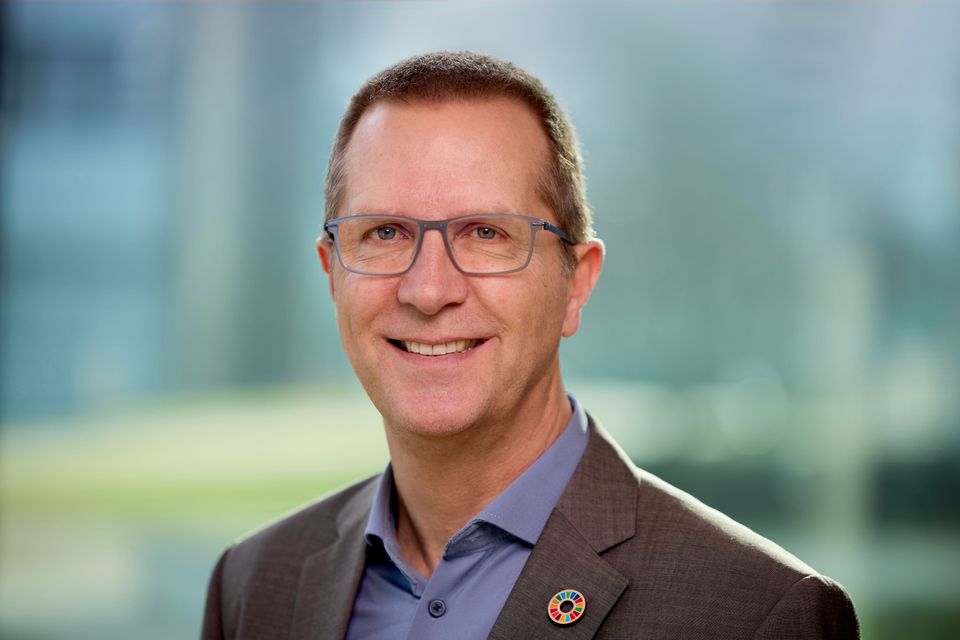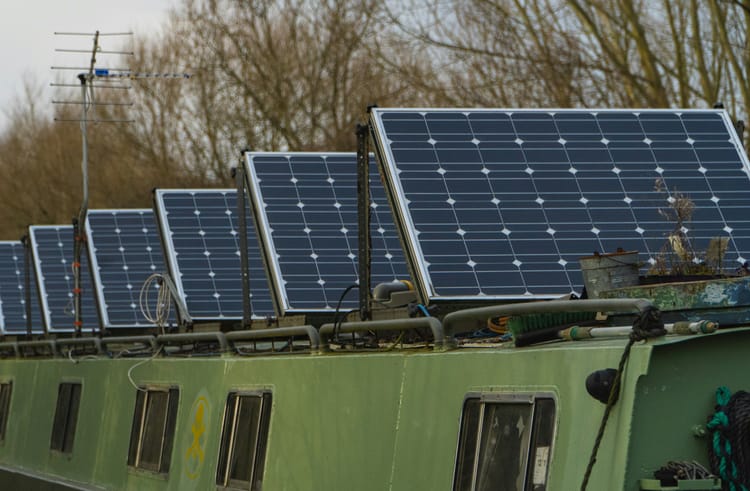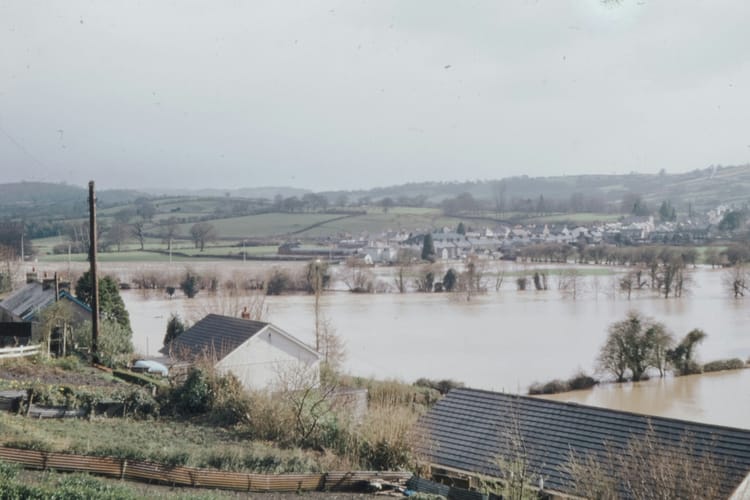SAP’s Chief Sustainability Officer Daniel Schmid on carbon accounting, hyperscaler transparency, and a “war” on how companies make decisions

The extent to which Chief Sustainability Officers (CSOs) hold budget and how they allocate it is a fascinating one. Industry divergence is wide. Despite its importance as a line of questioning, how deep someone’s coffers are, or indeed whether they carry a purse at all is a delicate subject to broach.
Speaking with SAP’s Chief Sustainability Officer Daniel Schmid, CSO Futures chooses the direct approach. After the briefest pause during which Schmid’s eyebrows raise ever so slightly, the answer is a somewhat unusual one.
Not only does the CSO of the German software multinational directly hold budget, but it is regularly topped up by travelling colleagues: An internal carbon price at the company means that “whenever a colleague sits in a plane, I get money; some people think I’m the bank of SAP” he quips drily.
He is referring to a mechanism SAP first tested in 2016 across 10 countries. This prices CO2 (from €40 to €400 per ton; depending on the flight and its distance) to release money for sustainability initiatives, as SAP ramps up not just its own internal decarbonisation programme (it aims to reach net zero by 2030) but continues to build out a suite of sustainability products for its expansive customer base.
An SAP refresher
SAP, which reported revenues of €7.5 billion in its last quarter, is a software heavyweight that provides enterprise resource planning (ERP) software, spanning applications for accounting, human resources, supply chain management and more for some 32,000 customers, including 99 of the 100 largest companies in the world. Its reach is significant; with its software provided as a mixture of on-premises software and cloud-based SaaS.
The depth of customer data SAP manages gives it a unique opportunity to build out a carbon accounting and supply chain decarbonisation proposition.
It has promised a new “green ledger”, for example, that it says will help companies to track and manage emissions with “actual and auditable data, and to communicate carbon data with supply chain partners.”
SAP revealed the plans at its annual conference earlier this year, along with an updated Sustainability Footprint Management platform and its new Sustainability Data Exchange application “to securely exchange standardized sustainability data with partners and suppliers so they can decarbonize supply chains faster.”
The SAP Green Ledger will become generally available in the second half of next year, says its Chief Sustainability Officer. There’s work to do on its own supply chain first: it’s still unusual to hear a CEO referencing sustainability goals on an earnings call but SAP’s Chief Executive Christian Klein could be heard name-checking not just net zero plans but a “multiphase supply chain engagement programme with our suppliers to significantly reduce our upstream greenhouse gas emissions” on the company’s recent Q2 call with investors.
That’s no small task: In 2022, SAP spent approximately €7.2 billion in purchases from more than 13,000 suppliers worldwide, its annual report shows; 30% of that being on cloud services – more on that below.
(When it comes to tracking progress, in terms of internal reporting, SAP’s Chief Sustainability Officer reports quarterly to executive board members, to the newly appointed Sophia Mendelsohn, Chief Sustainability and Commercial Officer and Co-GM of SAP Sustainability, and also has a dotted reporting line to SAP's CFO, Dominik Asam.)
A Chief Sustainability Officer’s biggest challenge
The biggest task of any Chief Sustainability Officer, says Schmid, is buy-in.
That means “helping [an organisation] really embrace sustainability from a line of business perspective, and that, of course, is a challenge. You always have promoters but you also have sceptical people – it all comes back to the business case. And the challenge in that context is also how to measure the impact you have on the planet through your business decisions and activities.”
“[We need to] change how decisions are made in companies. That is the biggest challenge for me and my peers. But that is a war we should focus on,” he says bluntly, adding somewhat unexpectedly that he is “super proud of not having a sustainability strategy” but rather “a sustainable business strategy.”
Semantics? Not so, the SAP CSO says: “There is a big difference [which is that for the latter] sustainability is well embedded in your core business strategy. “
“In fact our three key business strategy pillars are business agility; resilient supply chains; and sustainability outcomes. All the three are connected…”
With its supply chain data and deep reach into enterprise data SAP may have a unique advantage to create a genuinely powerful carbon accounting and minimising platform, but there is no shortage of companies rolling out various flavours of “Sustainability-as-a-Service”; some meaningful, some vacuous.
Clarity and clouds…
Few organisations can tout themselves as sustainability-centric without coming in for blistering criticism. Some recently addressed to SAP, for example, include that its “SAP sustainability control tower service is run from some of the highest carbon regions on AWS.” Is SAP itself doing enough? CSO Futures asks. How clear is it on the sustainability or otherwise of its data centre partners?
Daniel Schmid pauses: “Let me share some concrete facts on that journey with you and then you’ll understand where I'm coming from...
“Definitely more is needed. Until today, we from SAP ensure we purchase 100% renewable electricity for running all the data centres, including the co-locations and including the hyperscalers. We do that from our side because the hyperscalers can't provide the evidence which is needed for auditors to ensure we can continue to say we offer our solutions through a green cloud.
“Some of them [cloud providers] are already quite [advanced] on their journey. But until today, it's not done in a way that would allow us as SAP to say ‘we don't need to purchase any more clean energy when our solutions are run by X hyperscaler data centre’, because the evidence [from them] is not there. So this needs to be clearly improved. That is why we compensate that from our side and purchase clean energy to cover energy usage, not just from our own data centres, but including partner locations and the hyperscalers.”
(SAP’s annual report shows that the approach it takes to assessing this is to calculate electricity consumption based on total allocated server memory size – RAM – of all hyperscale services: “A power conversion factor is used to convert the allocated RAM value into a server power value, and an average PUE factor is used to extrapolate the total hyperscale service electricity…” It notes further down that “the vast majority of our overall emissions stem from the use of our software – customers running SAP solutions on their hardware and premises –” and that “due to our lack of control over our customers’ IT landscapes, these emissions are not included in our carbon neutral target… Nonetheless, we have been calculating the emissions for indicative purposes for many years and take them into account for our science-based target… [using] a PUE factor of 1.55, which is the average PUE of our external data centers. Emissions are calculated using a global electricity emission factor.”)
Critics will no doubt quibble over that approach. SAP’s CSO is honest about the fact that there’s work to do: “We need to have the ambition at SAP to be a role model. Through that we learn a lot and we gain the credibility to act as an enabler. But providing the data transparency, which is required for companies to steer their business holistically and to execute on their sustainable business strategy? That is crucial. That is the biggest lever we have in our hands…”
In terms of its own reporting, SAP says it reports in line with GRI Standards (audited), as well as its contributions towards the United Nations Sustainable Development Goals (SDGs), alignment with the Task Force on Climate-Related Financial Disclosure (TCFD), and maps its reporting to two more standards: The Software & IT Services Sustainability Accounting Standards prepared by the Sustainability Accounting Standards Board (SASB), now part of the Value Reporting Foundation, and the core “Stakeholder Capitalism Metrics” as proposed by the World Economic Forum’s International Business Council.
“We need more harmonisation and globalisation” on this, Schmid says. “Standards need to be defined as well on a level which does not lead to different interpretations. Today, you have some standards, if you ask auditor A, you get an answer A and if you ask auditor B, you get a different answer, that makes life difficult, but it makes life difficult as well for us as a standard software provider to provide standard software to cover the various regulations. So we need to embed quite a lot of flexibility and extensibility with our solutions, because there are so many different frameworks out there.”
Warming to the theme, he notes: “I would love to see more harmonisation here. I was talking to a car manufacturer recently and learned that there is legislation in place to report carbon emissions of the production of your car and supply chain to a certain standard, but when it comes to the battery in an electric vehicle, it’s a different methodology. What nonsense. We need to focus the efforts of companies on doing better on sustainability, not on fulfilling an alphabet soup.
"That’s why," he concludes, "we are investing heavily on that journey of transactional carbon accounting and moving away from averages to actuals.”







Member discussion